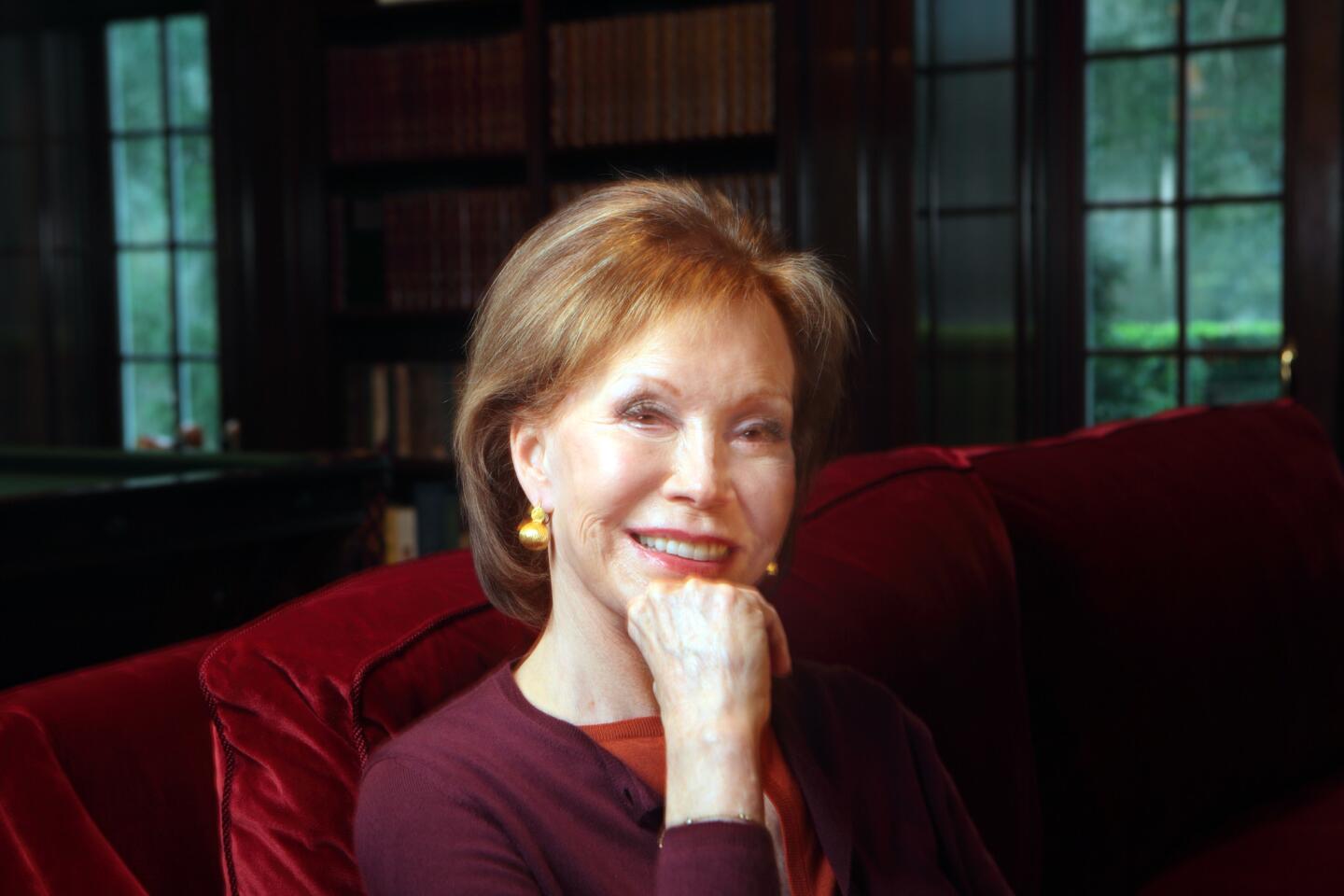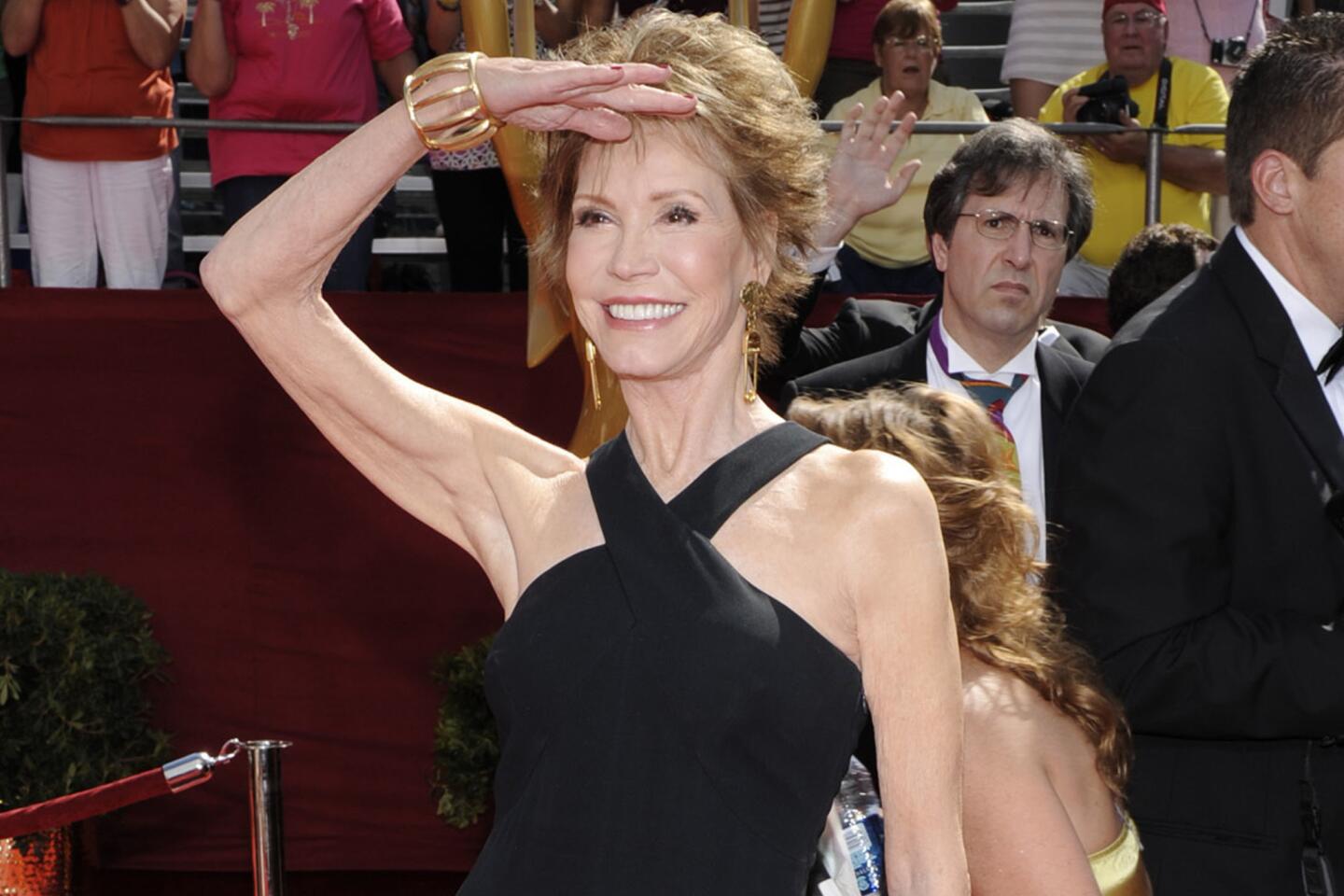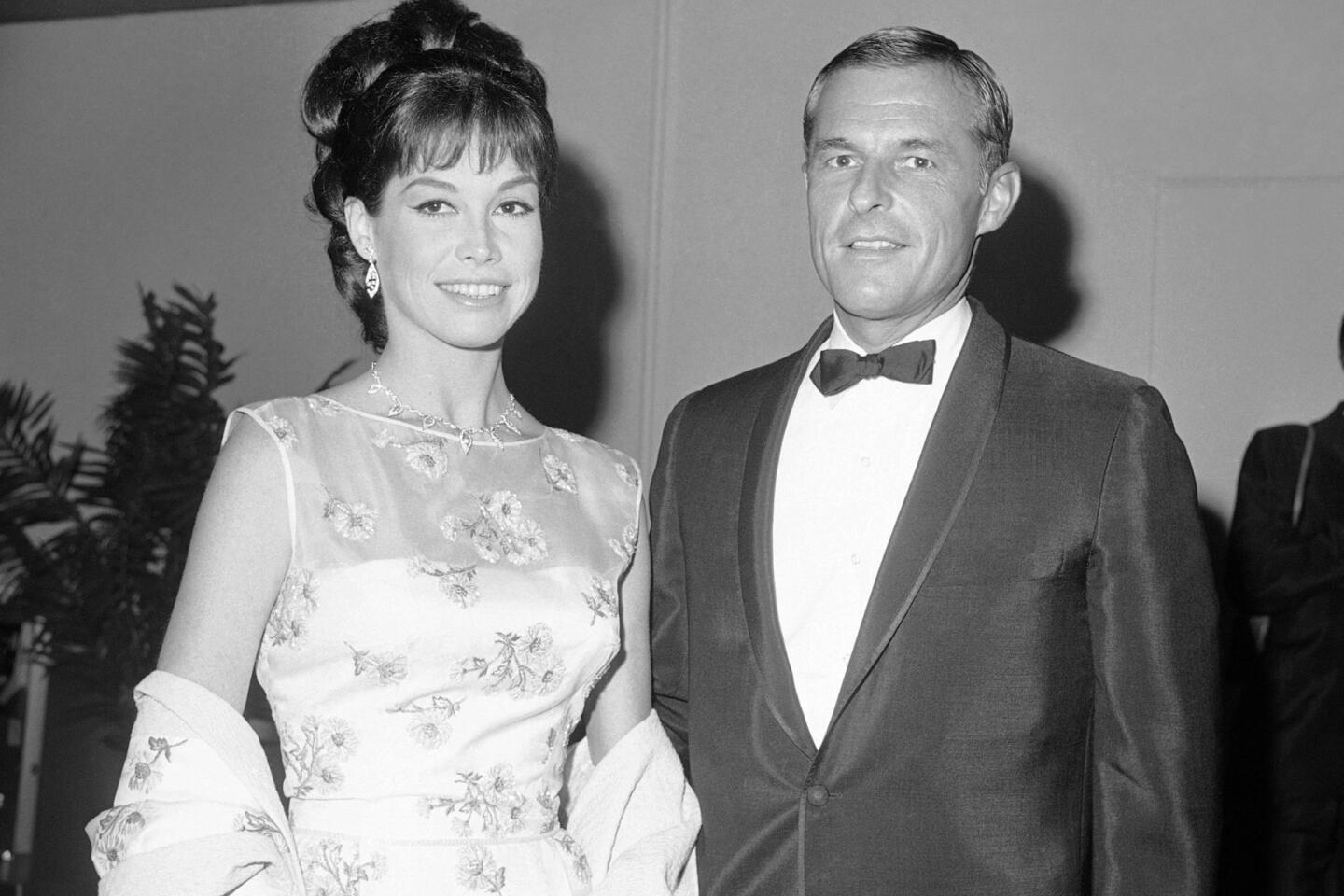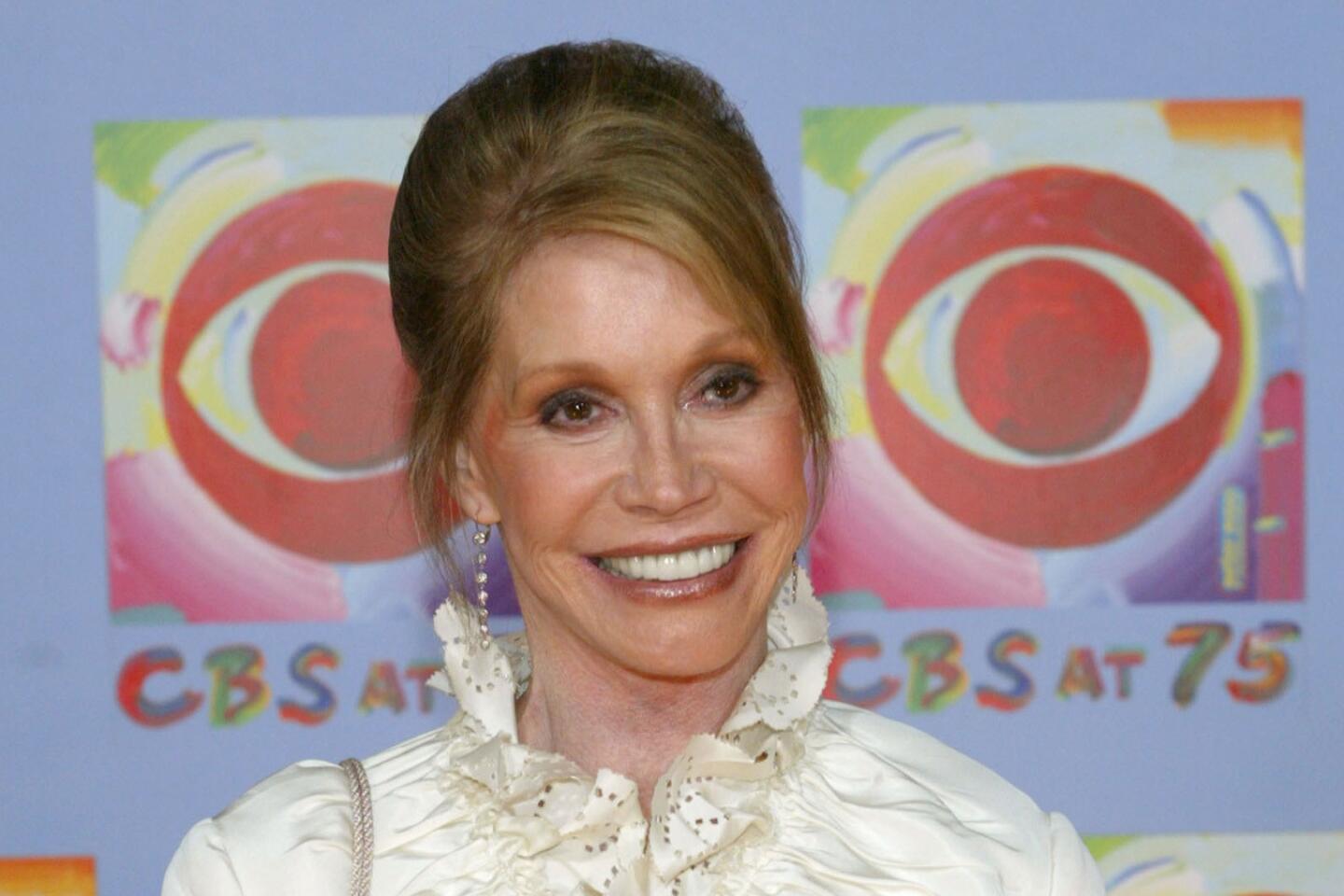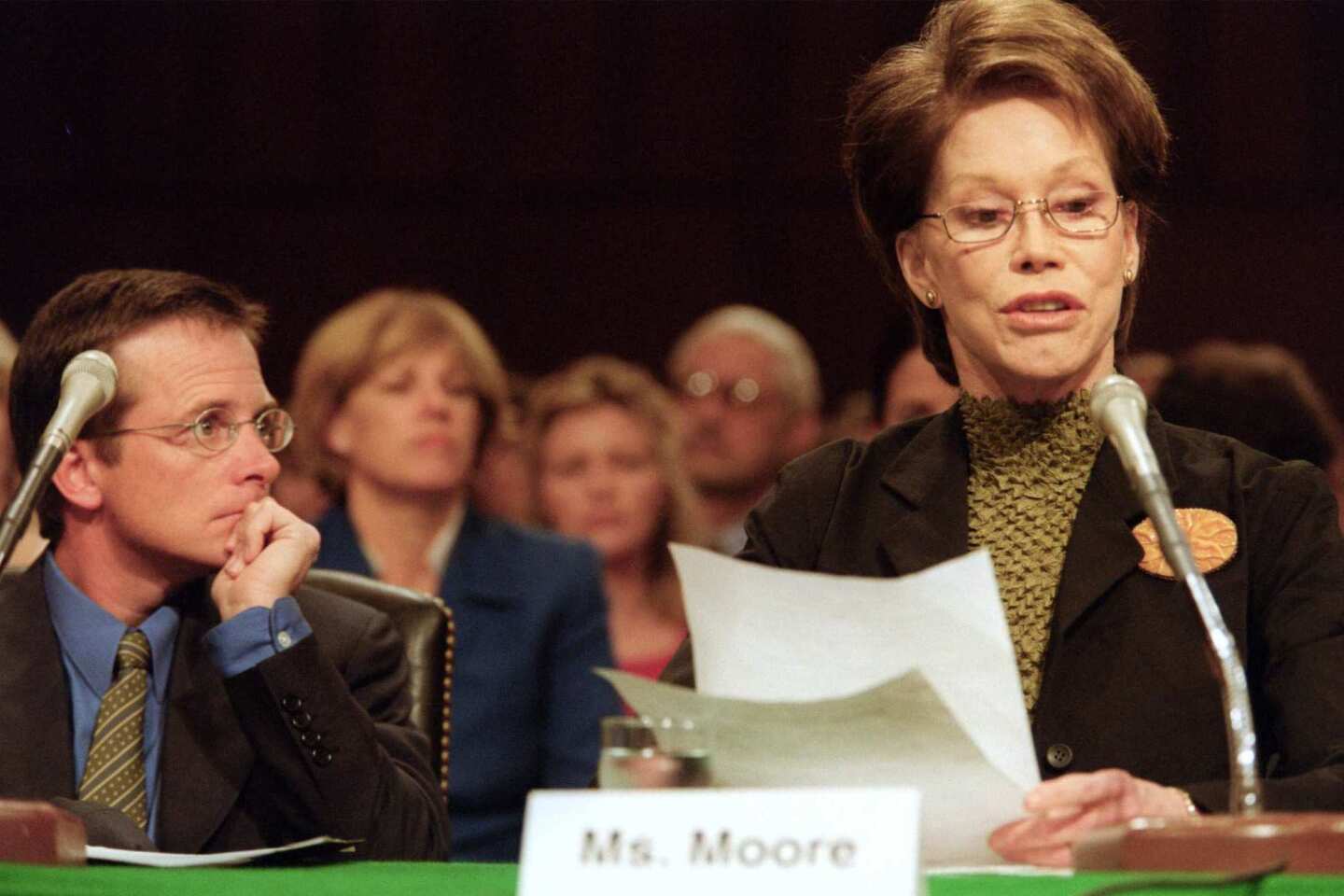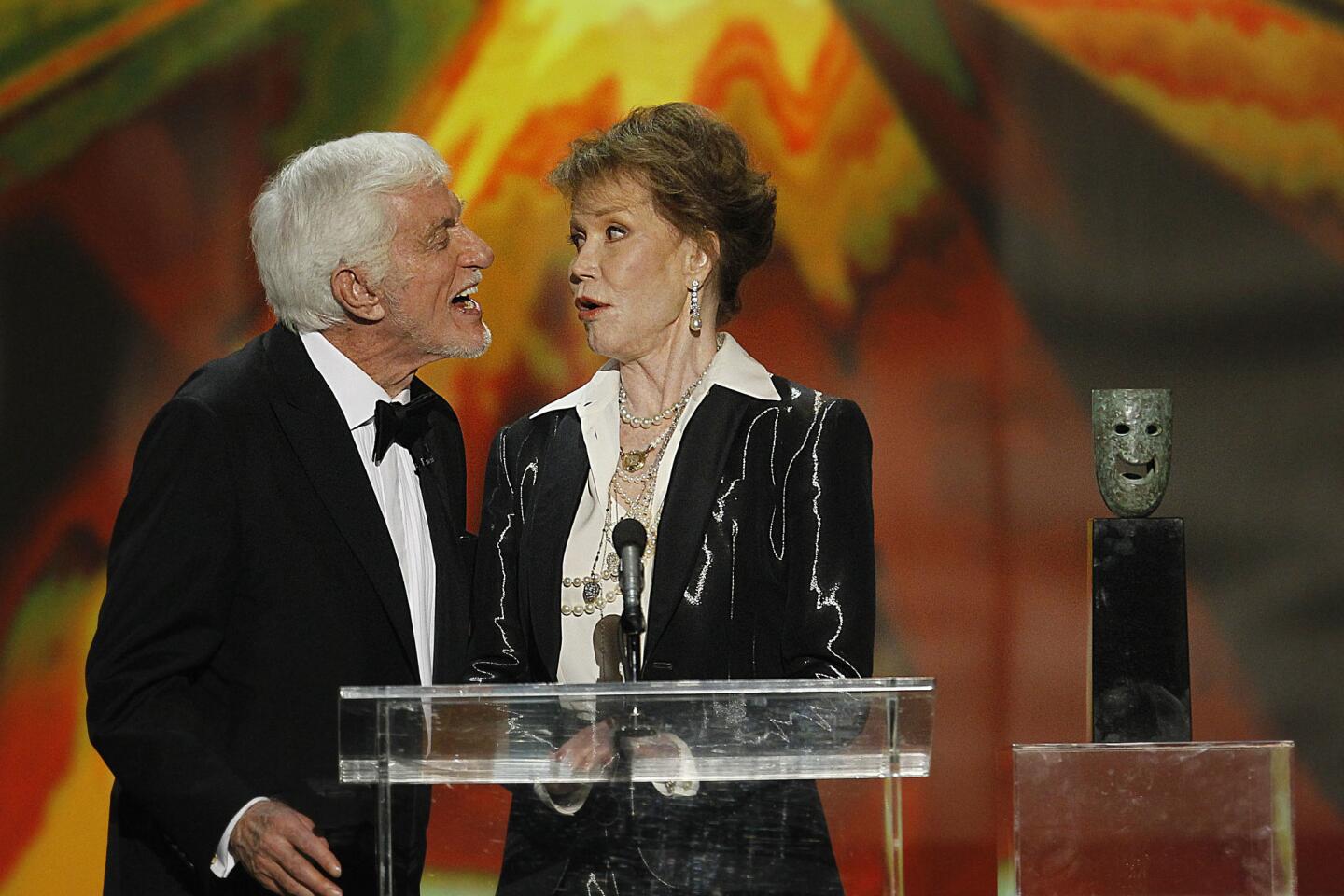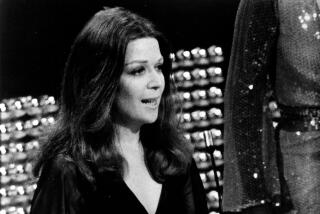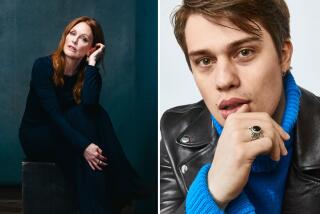From the Archives: Mary Tyler Moore and Dick Van Dyke’s reunion in ‘The Gin Game’ went beyond simple nostalgia
- Share via
Actress Mary Tyler Moore died Jan. 25, 2017. She was 80. In 2002, Moore and Dick Van Dyke, her costar in the acclaimed sitcom that carried his name, reunited for a television adaptation of “The Gin Game.” The two met with The Times’ Susan King to discuss their new project as well as the legacy of their most famous collaboration.
Dick Van Dyke and Mary Tyler Moore could have played it safe. But they didn’t.
Thirty-six years after they did their last scenes together as the irrepressible Rob and Laura Petrie on the classic 1961-66 sitcom “The Dick Van Dyke Show,” the two award-winning performers have reunited. But instead of picking a nostalgic, charming project that would have their legions of fans letting out a collective sign of joy, Van Dyke and Moore decided to go dramatic as two unsympathetic residents of a nursing home in “The Gin Game.”
“It was just a labor of love,” says Van Dyke with a twinkle of his blue eyes. “We wanted to do it together.”
Based on the Pulitzer Prize-winning 1977 play by D.L. Coburn, which he adapted for this TV presentation, “The Gin Game” focuses on the bittersweet relationship that develops between two lonely people at a rather ragtag old age home through a series of gin rummy games.
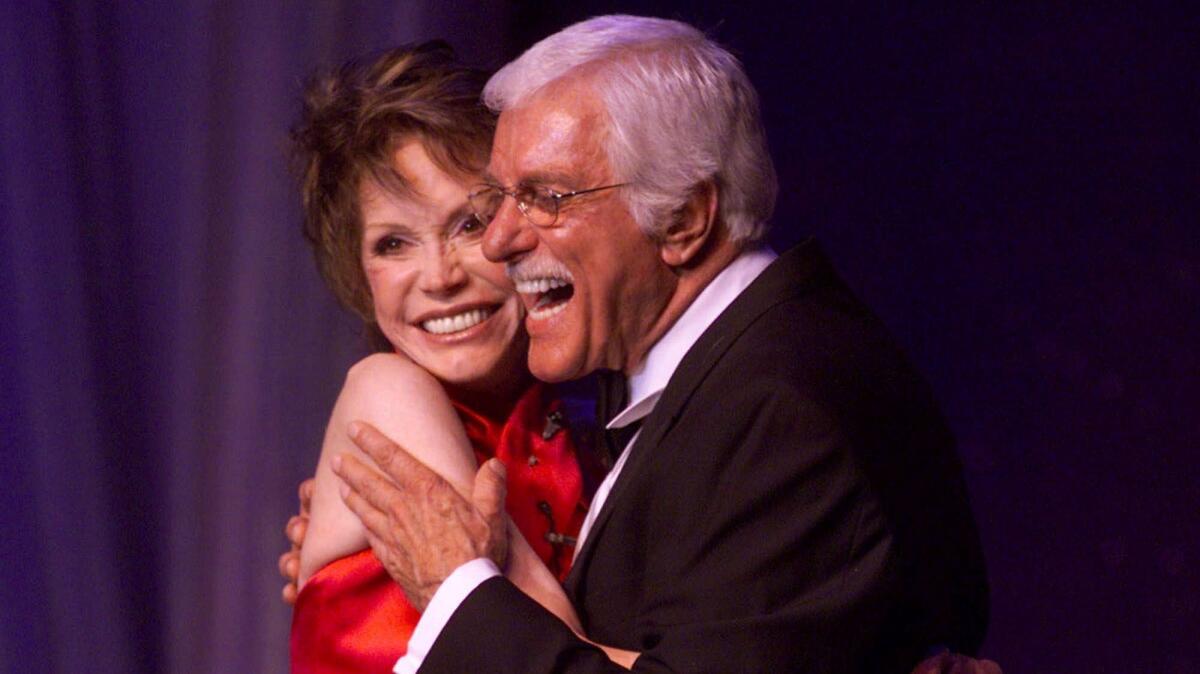
Van Dyke’s Weller Martin, who swears like a stevedore, is the more accomplished gin player. But he quickly learns that the Bible-quoting Fonsia Dorsey (Moore) is the more adept player. During the course of several games, their relationship turns sour as they reveal their angers, fears and frustrations.
“The Gin Game” originally ran on Broadway for 500 performances. Directed by Mike Nichols and starring the venerable husband-and-wife team of Jessica Tandy and Hume Cronyn, the play was nominated for four Tonys, with Tandy winning for best actress. That production was done for PBS’ “American Playhouse” series in 1981. In 1997, Julie Harris and Charles Durning appeared on Broadway and toured the country in an acclaimed revival.
The Van Dyke-Moore version will air early next year on the public television series “PBS Hollywood Presents.” It was shot on high-definition video over a hectic 12-day period earlier this month at KCET Studios in Hollywood.
“I am living a blessed life,” says Mary Mazur, senior vice president of programming and production for KCET, about her good fortune in getting the two stars. “It is not a sentimental play, and I think if someone was given the task of writing a piece for a reunion of Mary and Dick, or Rob and Laura, it would be perhaps quite sentimental. This is a rough piece and goes into some tough issues about life and how you have chosen to live it.”
Though the play is tough, the set was relaxed and fun.
“This will be my shining hour,” Moore and Van Dyke sang in unison between scenes on a recent morning. During a reporter’s two-hour visit, Van Dyke was usually telling jokes or breaking out in song. Sometimes he and Moore simply sat quietly next to each other as the crew set up for the next shot.
“He is just crazy about her,” says executive producer Ellen M. Krass, who also was one of the executive producers of the “American Playhouse” adaptation. “And she’s crazy about him. I wouldn’t say she’s smitten but it’s like he’s an older brother. It’s a great set, and everybody has been great.”
And both actors look great. Van Dyke, 76, actually is more handsome now with his white hair and mustache than he was 40 years ago on his series. Moore, playing about 10 years older than her 65 years, is whippet slim and beautiful even wearing an old lady wig of white hair and a modicum of makeup. And though they haven’t worked together in more than three decades--the two have appeared on reunion shows, talk shows and in the 1968 CBS special “Dick Van Dyke and the Other Woman”--their timing is impeccable as they shoot a confrontational scene.
“Action,” shouts director Arvin Brown.
“ ‘Transferred.’ How many Rs are there in the word ‘transferred’?” Moore says sarcastically as she puts down a card.
“Two,” Van Dyke responds testily.
“Two? Ha,” says Moore.
“Three! What the hell!” he retorts angrily.
As they repeat the scene several times, each take has a different vitality and venom.
When Van Dyke saw the original Broadway production, he knew it would make a perfect vehicle for the two of them. “I said to Mary, ‘We’ll do it when we are old enough.’ ”
The play piqued his interest on many levels. “It’s kind of a comedy and then almost immediately they start to bicker like a married couple. But on the darker side of it I see them as hanging on to this gin game to keep their cognizance going and not falling into dementia like everyone else inside they keep talking about. This is the one thing they are clinging to.”
Moore acknowledges their fans may be surprised at the play. “There is such a tremendous fondness for both of us,” she says. “I think that adds so much to this play. I hope that the audience is prepared for it. It’s not a light comedy, because toward the end you see these people reveal more and more of themselves and how twisted they are.”
Though Brown hasn’t previously directed “Gin Game,” he was very familiar with it, having been artistic director of the Long Wharf Theater in Connecticut when Nichols directed the pre-Broadway production.
“The exciting thing about doing this material is that, in the hands of every fine actor, it transposes itself into something absolutely different,” Brown says. “In this case, the two characters Dick and Mary are evolving are so rich and so totally different than what Hume and Jessie did. The play is almost like a different play. I feel because they haven’t been married all of those years like Hume and Jessie, there is a very subtle, dynamic sexuality, a tension that is under the surface. In a couple of scenes we have already shot there is a really tremendous sense of romantic possibility between the two that I think will make it doubly heartbreaking at the end because each of their baggage gets in the way.”
Neither Van Dyke and Moore can explain their chemistry. “I have no idea how to categorize it,” Moore says with a smile. “We are just Dick and Mary.”
Van Dyke recalls the first time he saw Moore arrive on the set of his series back in 1961. “I said, ‘She’s so beautiful,’ ” he recalls warmly. “ ‘And she’s young.’ But, boy, I tell you, within a couple of weeks we found out what a comedian we had. She didn’t know it. She had never done any comedy and she just had the timing. We just lucked out with everybody on that show. What a romp.”
The two return to the set to start rehearsing a scene in which Weller and Fonsia get into a heated, almost violent argument. The scene concludes with Weller shouting a cruel expletive at Fonsia and storming off the porch.
Moore quickly breaks the tension of the scene: “You’ve been wanting to call me that for 40 years,” she says to Van Dyke. The entire crew breaks into laughter.
ALSO:
Hollywood Walk of Fame: Mary Tyler Moore
‘The Dick Van Dyke Show’ is back on CBS in living color
From the Archives Mary Tyler Moore’s taboo-breaking shows seen in new light
More to Read
The complete guide to home viewing
Get Screen Gab for everything about the TV shows and streaming movies everyone’s talking about.
You may occasionally receive promotional content from the Los Angeles Times.
